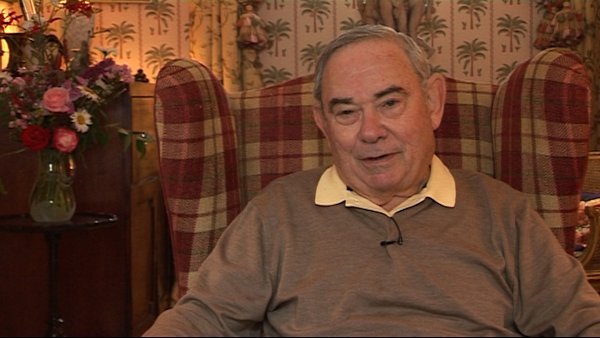NEXT STORY

The work of Elizabeth Blackburn and Carol Greider
RELATED STORIES

NEXT STORY

The work of Elizabeth Blackburn and Carol Greider
RELATED STORIES



And it was a problem until Jim Watson and Alexey Olovnikov had the insights that I'm now going to describe. Alexey stood on the platform and thought to himself that the subway train tracks... which, in fact, resemble a DNA strand, one of the rails representing the mother strand and the other rail representing the strand to be copied, and they in fact attach to each other with attachments that look very much like the pieces that keep the tracks connected, so it had that analogy very clearly to Alexey as the subway train approached.
He then had the insight that if the train can only copy the tracks – or one track, in order to make the analogy perfect, but it's not perfect – then the rails would be copied only when the engine was moving, but the cars themselves, as they were moving, could also continue to copy as well. But the area under the engine at the beginning could not be copied. This was just his reasoning analogy, and if that continued, of course, the rails would become shorter and shorter. And then he had this brilliant insight. He thought, if the DNA has nonsense nucleotides, or nonsense chemicals, at its end, that did not provide genetic information – unlike the genes that occurred downstream – if you had thousands of them, then each time the polymerase failed to copy the end, it would fail to copy a piece of nonsense information – that is, chemicals that did not provide genetic information – and this would behave like a buffer, so that the ends of the chromosomes would not suffer loss of genes, because what would be lost, due to the inability of the polymerase to copy the entire strand, would not be of value.
Leonard Hayflick (b. 1928), the recipient of several research prizes and awards, including the 1991 Sandoz Prize for Gerontological Research, is known for his research in cell biology, virus vaccine development, and mycoplasmology. He also has studied the ageing process for more than thirty years. Hayflick is known for discovering that human cells divide for a limited number of times in vitro (refuting the contention by Alexis Carrel that normal body cells are immortal), which is known as the Hayflick limit, as well as developing the first normal human diploid cell strains for studies on human ageing and for research use throughout the world. He also made the first oral polio vaccine produced in a continuously propogated cell strain - work which contributed to significant virus vaccine development.
Title: Closely observed train tracks lead to inspiration
Listeners: Christopher Sykes
Christopher Sykes is a London-based television producer and director who has made a number of documentary films for BBC TV, Channel 4 and PBS.
Tags: Aleksey Olovnikov
Duration: 2 minutes, 40 seconds
Date story recorded: July 2011
Date story went live: 08 August 2012